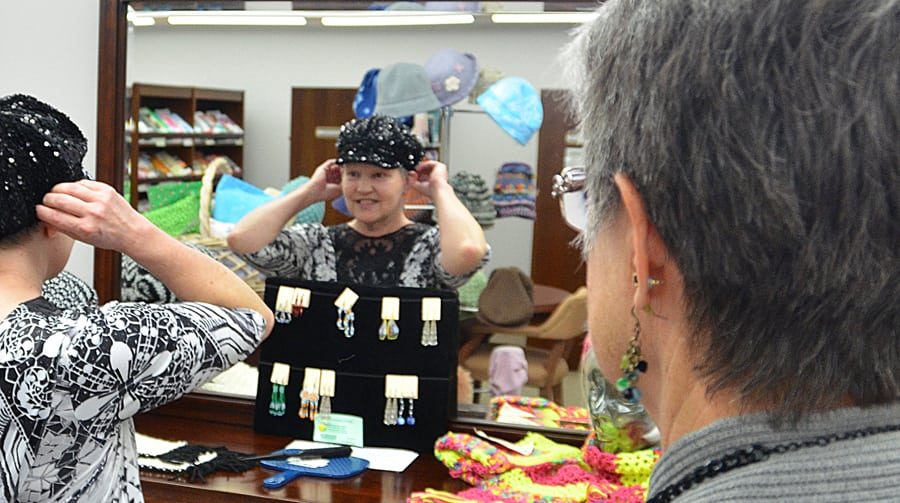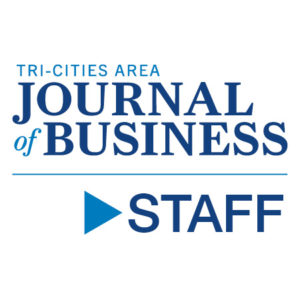
Home » Tri-Cities Cancer Center Foundation leads expansion capital campaign
Tri-Cities Cancer Center Foundation leads expansion capital campaign

February 17, 2016
It’s been more than two decades since the Tri-Cities Cancer Center first opened its doors.
[blockquote quote="Volunteers are a big issue. We can’t do what we do without them." source="Phil Gallagher, Tri-Cities Cancer Center Foundation board president" align="right" max_width="300px"]
The Cancer Center started as a partnership between three local hospitals, Kadlec Regional Medical Center, Lourdes Health System and Kennewick General Hospital, now known as Trios Health.
The vision was to create a nonprofit medical center to treat cancer and to care for those impacted by the disease.
Since then, the Tri-Cities Cancer Center has become a trusted and valued community resource for cancer treatment, support education and information.
But over the past 20 years, medical technology and cancer treatment options have evolved and the Tri-Cities population center has grown, creating greater demand in a highly competitive industry.
To meet those demands, the Tri-Cities Cancer Center is undergoing a $7 million expansion, remodel and upgrade.
And the Tri-Cities Cancer Center Foundation is leading a capital campaign to help fund the improvements.
The Tri-Cities Cancer Center has contributed about $5.4 million to the project. The Foundation pledged $1.5 million toward the project and has raised about $800,000 since starting the capital campaign last March.
“We have less than $400,000 left,” said Elizabeth McLaughlin, the Foundation’s director.
The Foundation traditionally gives the Tri-Cities Cancer Center about $600,000. That money is raised through a variety of events, from an annual breakfast to its Run for Ribbons 10K/5K/1 mile run and walk, to a golf tournament and its Autumn Affair formal dinner and auction.
But that money is used for the Cancer Center’s support services — to provide educational programs, nutritional services, support groups, the Ralph R. Peterson Library and The Resource Center, which post-mastectomy supplies like bras, prosthesis, wigs, hats, facials and other non-reimbursable services to patients free of charge.
The money for the capital campaign is completely separate from the traditional funding the Foundation gives to the Cancer Center.
“This is above and beyond that,” said McLaughlin. “And it’s a significant task.”
And the payback for the community can be counted in the number of lives saved.
The improvements include a 4,700-sq.-ft. expansion of the center, increasing the number of exams rooms from four to 10.
The new exam rooms will be larger, as well, offering more comfortable space for family members and room for technology. All will have flat screen monitors that display scans and other medical information.
A large part of the improvements being made at the Cancer Center is investment in new technology.
Last year the Cancer Center purchased an advanced radiosurgery system that had a price tag of $4 million.
The Edge Radiosurgery System by Varian provides the most accurate radiation treatment available, offering precision, speed and a focused stereotactic radiosurgery suite of tools.
It accurately targets tumors in the brain, spine, lungs and other areas that are typically difficult to treat without the need for an incision or recovery in a hospital setting.
The Cancer Center also has the Trilogy™ Stereotactic System, an automated, robotic system that allows doctors to provide the most accurate treatments possible in the shortest amount of time.
And, in January, the Cancer Center announced a new brain cancer treatment it has available using a device called Optune by Novocure™. Optune is a portable, noninvasive medical device designed for use by patients at home.
Technology is great for treating cancer, but the Foundation’s goal is to ensure the patient isn’t left out of the process.
Along with the physical expansion of the facility, the Cancer Center will also expand patient-centered care, including its Palliative Care Program and adding a Survivorship Program.
The Cancer Center has had a Palliative Care Program for several years, but now it will have dedicated clinic space, allowing for a more comprehensive program to maintain a good quality of life for patients whose cancer is treatable, but can’t be cured, taking into account their physical, mental and spiritual needs.
The new Survivorship Program has been created to provide those who have beaten cancer with a condensed document they can take with them to their general practitioner or if they have other medical issues down the road.
Phil Gallagher, Foundation board president, said he is very excited about the program and the support it lends to survivors.
“It spells it out — this is what I had and what I need for the future,” said Gallagher. “So when someone is cured, they aren’t all the sudden alone.”
The expansion includes adding a Visiting Physicians Clinic, providing a dedicated area where all the physicians involved in a patient’s care can meet with each other and the patient. It’s not unusual for a patient to have to see a doctor at one facility in Kennewick, the drive to Richland to see their specialist. The new space will bring those doctors to the patient.
“This will improve the coordination of care and be more convenient for the patient,” said Phil Gallagher, Foundation board president. “It’s really about patient convenience.”
The Tri-Cities Cancer Center Foundation is still seeking donations to help finish the expansion, but also needs warm bodies to help out.
“Volunteers are a big issue,” said Gallagher, who has served on the Foundation board for four years. “We can’t do what we do without them.”
To donate or for more information, call the Foundation at 509-737-3414 or go to the website at www.tccancerfoundation.org.
Local News Philanthropy
KEYWORDS february 2016





